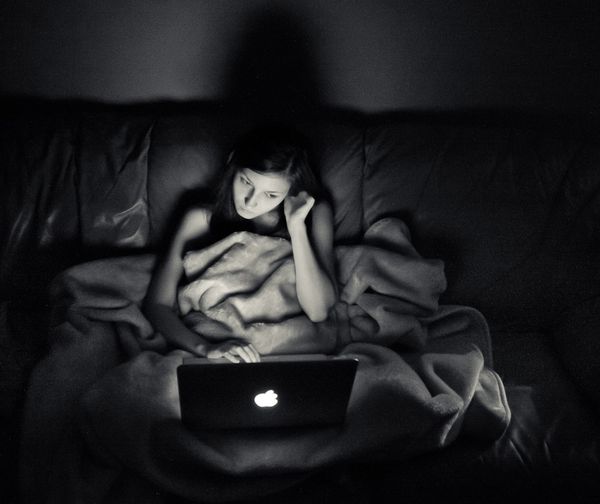The loading symbol gleams on the screen as my roommate sits next to me with a bowl of popcorn, ready to watch the new Netflix original Velvet Buzzsaw. Halfway through she stands up, states "I can never get those 40 minutes of my life back," and walks away. In the end, I disagree with her. Thought to be a movie which parodies the art world, Velvet Buzzsaw is also a parody of the artist them self.
Writer and director Dan Gilroy parallels the struggles faced by young artists. Each character begins as believable and real. It is only as the movie continues that they become over-exaggerated and exorbitant versions of themselves. There is a devolution of each character that expresses something often seen in the art community. Many young artists in the field start out as creative and expressive. In the movie, the early artists hold their hopes and heads high, setting themselves up for a beautiful future. Then, slowly become convoluted and confused, and by the end, they become bored.
The film presents three important characters, each in different stages of their careers. We meet Josephina (Zawe Ashton) at the beginning of her career, Rhodora Haze (Rene Russo) no longer in the prime of her career but looking for any way to come back, and Piers (John Malkovich) at his wit's end, unable to come up with anything original.
Each stage of the film descends further into madness, expressed by each artist, respectively.
Gilroy starts his displays as a classic horror movie, hitting every mark, and capturing every nuance. But as the story begins to unfold, scenes seem to be left out and pivotal points are sped through. He shows the parallels in Josephina, as she attempts to gain footing in the art community, but often is the downfall of her own success. The movie follows suit and starts to head towards a realistic plot, until it begins to reflect Rhodora.
While almost believable at first, the horrors become more outlandish and even predictable. This follows Rhodora's attempt to make herself relevant, at no avail. She is seen by many in the movie as too far gone to have any real hold over what goes on around her. As she acts without reason, the Gilroy forces the film to follow, the horrors appear abruptly and without real context. Bringing in new information and contradicting scenes, the realistic plot begins to unravel, until it becomes predictable.
Following Piers, the film's predictability bores those around it. And, like many older artists, Piers realizes he lost his touch. Both Piers and the film hit rock bottom, they must come to an end. Piers' final scene brings the movie together. It shows him walking around a beach, regaining his focus. Bringing on a new beginning.
The last scene proves that Gilroy is aware of the poor quality of his film. He drags his own film down, on purpose. He wanted to express the decline of an artist when they are pushed beyond their limits for monetary gain. But he shows this by more than just presenting artists torn apart by money; Gilroy knows that his film slowly devolves because so do artists.



















